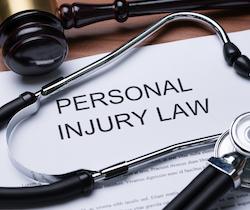Smiles Fool You.
We WIN Legal Fights!

When you find yourself in the aftermath of an unexpected accident, understanding how compensation comes into play can be both crucial and confusing. Personal injury law in Texas is a broad field that encompasses various types of incidents, from car accidents to slips and falls, all of which can substantially affect victims’ lives. This article will guide you through the intricacies of personal injury settlements in Texas, highlighting how these settlements are calculated, the types of damages claimable, and statistical insights to better prepare you for what lies ahead.
Personal injury law covers any harm one person causes to another. In Texas, these laws help injured parties seek compensation for their losses. If you have suffered due to someone else’s carelessness or behavior, you may have a personal injury claim. The claim can cover financial losses, medical bills, and more. Texas law requires the injured party to prove the fault of the other person. This process can involve gathering evidence, hiring a personal injury lawyer, and going through the legal process. Knowing the basics of Texas personal injury law can help you understand your rights and options better.
Personal injury law aims to protect victims who have been physically or emotionally hurt. In Texas, personal injury covers injuries from car accidents, workplace incidents, and more. The key focus is on who is at fault, or the “duty of care.” Whoever failed to meet that duty may owe compensation. Besides physical injuries, the law covers emotional distress and mental anguish. Property damage and financial losses also fall under its scope. In some cases, there is potential for punitive damages, which are meant to punish the wrongdoer. Understanding the scope of Texas personal injury law is crucial for a fair settlement.
In Texas, personal injury cases often involve accidents or events that cause harm. Car accidents are one of the most common examples. They often lead to medical treatment and can affect the victim’s life. Another common case type is workplace injury, which involves injuries at a job site. These cases can be challenging, especially when determining who’s at fault.
Each case type requires proving the fault party’s responsibility. This involves gathering evidence, often necessitating a personal injury lawyer’s expertise. Understanding different case types helps in knowing when you might have a valid personal injury claim in Texas.
In Texas, settling a personal injury claim can be complex. Settlements depend on the nature and extent of the injury. Factors like Medical bills and Property damage are crucial in determining the amount. Personal injury victims must navigate through insurance company negotiations, which can be tough. The goal is to reach a fair settlement that covers all financial losses incurred. While each case is unique, understanding typical settlement components can help injured parties prepare better. Personal injury attorneys can offer guidance to maximize settlements based on specific circumstances. It’s important to note that legal actions can vary in duration and complexity, which is integral when considering potential settlement amounts.
Settlements in personal injury cases are calculated by considering several key elements. Medical treatment costs play a significant role in determining the amount. The cost of current and future medical bills is essential for calculating fair compensation. Factors like loss of wages and potential future earnings also influence the settlement. The injured party’s economic losses must be reviewed alongside non-economic damages, such as mental anguish and emotional distress. Insurance companies evaluate these factors to propose a settlement offer. Personal injury lawyers can help negotiate and ensure the calculation reflects the victim’s actual loss. They play a crucial role in ensuring that all relevant damages are accounted for in the final settlement.
Damages in personal injury cases can be classified into three main categories: Economic, Non-Economic, and Punitive. Economic damages cover direct financial losses such as medical bills and lost wages. These are usually straightforward and can be documented with receipts and payslips. Non-economic damages include subjective elements like emotional distress or mental anguish. These are harder to quantify but play a vital role in the injured party’s overall recovery. Finally, punitive damages are aimed at punishing the fault party for egregious behavior. Though not common, they apply in cases involving willful misconduct. Understanding these damage types helps in pursuing a comprehensive personal injury claim.
Personal injury statistics provide insight into common trends within Texas. Annually, many individuals file personal injury lawsuits due to varying circumstances, from workplace injuries to medical malpractice. The majority of claims resolve through negotiated settlements, rather than proceeding to trial. Statistics indicate that most cases involve moderate settlements covering both economic and non-economic damages. However, severe injury cases might yield higher compensation given the extensive impact. Insurance companies often settle these to avoid the costs of protracted legal process. Overall, the data highlights the significance of having a well-prepared legal action plan tailored to personal injury law nuances. Understanding these patterns aids potential claimants in gauging expectations realistically.
An experienced personal injury attorney in Harris County, Galveston County, Fort Bend County, Montgomery County, Brazoria County, Houston, Sugar Land, Missouri City, and Stafford, Texas at Thornton Esquire Law Group, PLLC will take over the case from the very beginning and make sure that you receive fair compensation for your injuries. A personal injury lawyer will help you recover medical expenses, lost wages, pain and suffering, and other losses due to the accident. Contact us today at www.thorntonesquirelawgroup.com for a free case evaluation consultation.